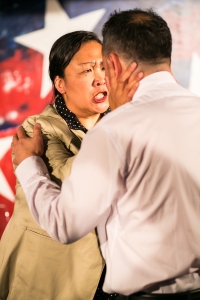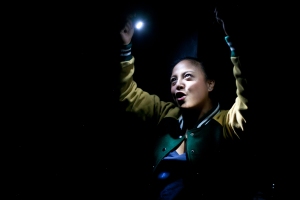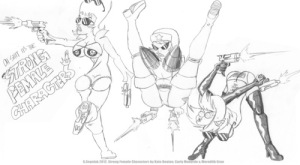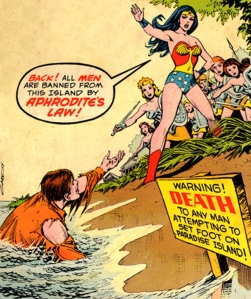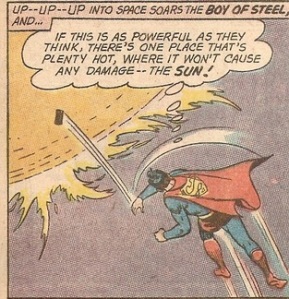(UPDATE: I tweaked the title a bit due to the number of people confusing me with the recent Chicago Trib article. If you’re here to read something against all forms of audience participation indiscriminately, you’re in the wrong place.)
There’s been a lot of talk in the past few years about “audience engagement.” It’s partially been driven by a few big grantors requiring some form of it, and partially driven by the psychology of trends. Because every new entertainment technology sends people right to the THIS IS THE END OF THEATRE box, frightened by the popularity of the internet and its DIY culture, some grantors and theatremakers have been scrambling to create theatre that borrows some of that mojo in order to glean a portion of that success. The problem is: It doesn’t work.
OK, that’s an exaggeration. It CAN work. For starters, “audience engagement” need not mean “audience participation.” That’s just the most prevalent (and problematic) form. There are other ways to engage your audience. Shotgun Players in Berkeley, for example, has created several excellent theatre pieces based on interviews with members of the local community, telling their stories and telling the story and history of the area. The most recent was Daylighting, for which they set up a recording booth in the lobby for people to tell their own Berkeley stories after the show, which were posted on their website. That’s what I’d call excellent, effective audience engagement that should stand as a national example for how to get it done. Interrupting an otherwise traditionally-structured performance to haul audience members onstage or force actors to put individual audience members on the spot by making them perform actions or engaging them in conversation– not so much. A recent production I saw, otherwise traditionally structured, actually had an actor begin a benign conversation with an audience member at the top of the show and then suddenly verbally attack her, shouting insults. I had enormous sympathy both for the woman being attacked– women are verbally assaulted by male strangers all the time, and it’s an extremely unpleasant experience– and for the actor forced to perform the attack. While that’s an extreme example, that kind of “audience engagement”– audience participation as surprise, forced interaction– is by FAR the most common kind. It just doesn’t work, and I have a theory as to why.
But first let me say that there are very specific ways in which audience participation works very well. One great example is the new trend toward what people are somewhat misguidedly (I’ll get to that in a second) calling “immersive” theatre– the kind of theatre partially based on narrative gaming (especially video games) and partially based on narrative ride-through or walk-through experiences (think haunts or Disneyland’s Pirates of the Caribbean)– which works very well. The most famous example of this is Sleep No More. This is better titled “interactive theatre,” so that’s what I’ll use.
What makes audience participation work has been perfectly described in Jeffrey Mosser’s 2012 Howlround piece, “The Psychology of the Audience: Rules of Engagement.” In it, he describes how this kind of theatre must be conceptualized and constructed with the audience as a participatory element from the beginning, and that the participation must be completely voluntary. In other words, a successful audience participation piece can’t exist without audience involvement, and the degree and type of audience involvement has to be chosen by each individual audience member. This is why interactive theatre pieces work, as well as HOW they work. A video game’s narrative doesn’t exist until you play it, and in most cases now, the narrative changes according to how you play the game. You’re playing the theatre piece like a video game, and/or being taken through an experience that happens around you, and with which you interact on your own terms. You go to that type of theatre (and other types of interactive theatre structured around the concept of voluntary audience participation) specifically for that experience, and it’s a different experience entirely than traditional theatre. Megan Reilly’s excellent article in Howlround about the gamification of theatre is well worth a read for anyone interested in this kind of work. She describes both the ups and downs of the format– both which I’ll get to in a bit.
People who are fired up about the promise of interactive theatre can be very disparaging about traditionally-structured theatre– a show that’s performed for an audience that sits in the dark and watches it. It’s often touted as the “future of theatre,” as if other (both participatory and traditional) models were useless. It’s an enormously disappointing and short-sighted point of view, especially considering the fact that this kind of experience– becoming wholly immersed in a story someone is telling you– works. It works not only in theatre, but also when you’re lost in a novel or a film, or when you’re spellbound by a storyteller, even when that person is just a friend at a party. And let’s stop for a moment and look at that word– SPELLBOUND. We all know what that means– so rapt, so caught up in the narrative we’re consuming that we have a truly singular, magical experience. People aptly describe it as “losing themselves” in a story. It’s something that we’ve all experienced, and that only happens when we’re passively immersed in someone else’s narrative. That’s become a dirty word– “passive.” The “passive” audience is seen as a sack of potatoes sitting there, doing nothing but having something spoon-fed to them, detractors claim. Au contraire, neurology has discovered.
That supposedly “passive” audience, when experiencing what we colloquially call the state of being “spellbound” by a book, film, play, or story, are experiencing hugely active and unique brain states. Researchers have discovered that while “passively” consuming fictional narrative, the human brain not only experiences that narrative as if it’s actually happening, but also improves and expands the consumer’s empathy. A different study found that when an audience is “passively” spellbound by a narrative, their brains experience neural synching with the storyteller (and therefore, in a group setting like a theatre audience, with EACH OTHER), again experiencing the narrative neurologically as if it’s real and again expanding empathy. These studies confirm what theatregoers already know: there’s something magical about being rapt in a story someone is telling you– something unique and undeniably immensely valuable. That’s the kind of theatre I would be more likely to label “immersive.”
When you’re playing through interactive theatre, you’re very much aware of your relationship to it, even more so than in a video game where your hands are manipulating the controller almost involuntarily as you navigate the world on the screen, losing yourself in your avatar’s experience. In interactive theatre, your physical body is in the game, rather than an avatar, and you become the self-aware center of your own narrative, a narrative you create with the tools the production has given you. In the traditional immersive experience, you’re in someone else’s narrative, experiencing their lives and feeling their feelings, which is the theory behind how that kind of theatre creates empathy. Interactive theatre is about having a magical, self-involved, self-aware experience of your own. It’s no less valuable, but it is different, and there are both gains and losses. The gain would of course be the wonder and magic of being surrounded by, and a part of, a fictional world. The loss, I think, is related to the loss of the immersive experience– the loss of that “spellbound” near-trance state, which loses the neurological synching experience that creates empathy.
In fact, I would say that the interactive theatre experience is more likely to deter empathy. As Megan Reilly describes, slower-moving patrons are literally elbowed out of the way as other patrons, people who are on their second or third playthroughs, are pushing their way through the crowd to be in the right place to trigger certain events or be chosen for certain special content. Anyone who’s ever been in an online multiplayer environment knows exactly what that’s like. And while face-to-face contact could lessen the rudeness one encounters in online co-op, it does not entirely eliminate it, especially, as Reilly notes, when patrons are given masks. I wouldn’t bother to see Sleep No More for that very reason– as someone who is short and has some mobility issues, I assume that I will be pushed out of seeing and experiencing a lot of the best content. It’s something I experience all the time in public spaces, so I wouldn’t expect it to be different in a show. I don’t need to spend $100 to have people push ahead of me and block my view when I can experience that for free at Trader Joe’s.
But that doesn’t mean that people, especially people who’ve never experienced it before, can’t be awed by interactive theatre, or can’t have a fun or even emotionally intense experience. The fact that something isn’t disabled-friendly or favors the aggressive player doesn’t make it a shitpile for the people who have what it takes to be high-level players. Additionally, there are interactive shows that better handle those aspects, as Reilly documents, using an “on-rails” rather than open world structure. There’s no question in my mind that some company somewhere is working on an open world interactive theatre piece that creatively corrects for both. (Reilly herself is working on an interactive piece, and I have every expectation that it will kick all of the ass.) Despite the fact that interactive theatre trades the spellbound neurology for a self-focused one doesn’t make it LESS than traditionally immersive theatre, just a different, and no less valuable, experience. Playing through an interactive theatre experience– being literally within the world of a play– can be a wonderful experience. But so can being in the audience in a traditional performance setting.
So let’s take a step back, see interactive theatre as a TYPE of theatre, not as the FUTURE of theatre, and stop disparaging traditional audience experiences as if they don’t work, because they DO. These two types of theatre do two very different things, both valuable. We’re big enough to value both for what they are, without demanding that one is better, more important, or the replacement for the other.
So to bring it all back home, my theory about the reason forced audience interaction doesn’t work in otherwise traditionally-structured theatre is based in the neurology of narrative: If your piece isn’t constructed around audience interactivity, when you force an audience member to participate rather than observe, you disrupt their neurologically synched “spellbound” state, jerking them back into a self-aware state. In most cases, that’s not just a normally self-aware state but a HIGHLY self-conscious, awkward one. It’s a matter of conjecture how long it would take for that audience member (or the audience members nervously wondering if they’ll be next) to recover neural synching with the narrative and the people around her. And of course, this is just a theory as to why forced audience participation so rarely works. When a neurologist is looking for funding for that project, I’ll be the first to contribute to the Kickstarter (award level: brain candle).
I think interactive theatre, while something that has been in and out of favor for centuries, is really hitting its modern stride with the gamification format, and I expect exciting things from it as they work out the kinks. I would love to see forced audience participation fall by the wayside completely as we explore the neurology of the audience more and more. And despite everything, I still think it’s valuable to imagine the ways in which *voluntary* audience participation can work in some forms of traditionally-structured performance (my guess is that it’s much more likely to work in direct address theatre that never establishes a fourth wall, like Always . . . Patsy Cline or in meta-theatrical and camp performance). Emphasis on VOLUNTARY.
All this boils down to: you MUST consider your audience’s experience carefully. We have more tools than ever to understand what their experience will be like. Avail yourself of them and make your decisions with open eyes.
But really, apart from the neurological experience you may want to create and nurture, and apart from the considerations of what may or may not “work,” understand that forcing someone to do something is never OK, and can sometimes even be dangerous. I’ve seen actors force audience members into conversations or physical actions that would feel HUGELY invasive and inappropriate to, say, an abuse survivor, or physically painful for someone like me– you can see the cane, but you can’t see the surgery scars or the areas of injury. I recently saw an actor climb over the seats and into the audience at a huge professional theatre, and all I could think was, PLEASE ALL YOU GODS DO NOT LET HIM COME THIS WAY, as using my shoulder as leverage (as I could see him doing) or bumping into my leg could cause me enormous pain. I stopped watching the play and started strategizing how to block the actor with my cane should he come near me.
I suppose you could sum up my entire post with “Voluntary good, forced bad,” but the REASONS for that are critical. We have more tools than ever to create amazing audience experiences. Let’s use them all to their best advantage.

